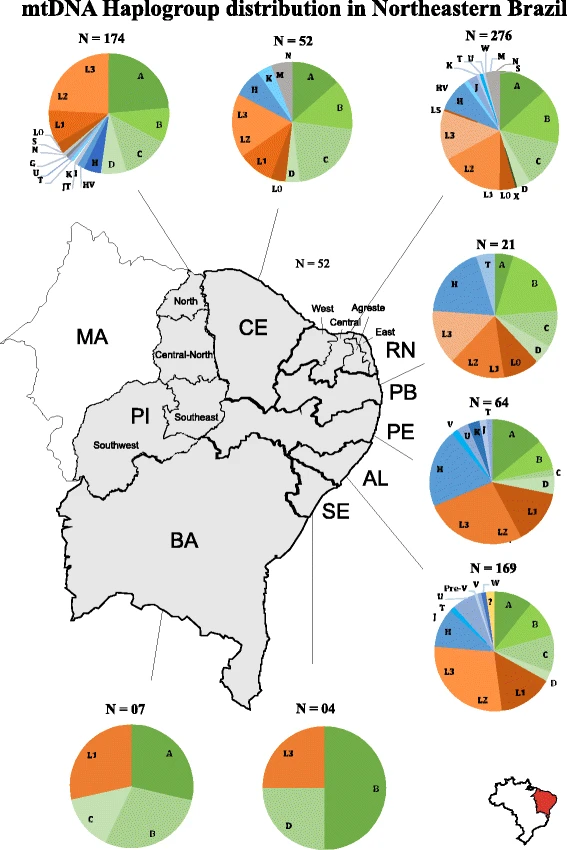Previous studies suggested African mtDNA would be most prevalent in this region, but this study showed that, unexpectedly, Native American mtDNA groups make up the majority or plurality in many regions in the Brazilian northeast.
"Distribution of mtDNA haplogroups in Northeastern Brazil. Amerindian haplogroups in shades of green; Non-Amerindian Asian haplogroups in shades of gray; African haplogroups in shades of orange; European haplogroups in shades of blue."
"Overall, the population of the Northeast has a larger contribution of Amerindian mitochondrial lineages than that of Africans. This constitutes a remarkable presence and resistance of the Native American component considering the centuries of drastic population decimation through conflicts, ensalvement, and diseases. Also, the Northeastern region was the main port of entry for enslaved Africans, being that Maranhão, Pernambuco, Bahia, and Rio de Janeiro were the leading states for the arrival of slave ships (only the latter is not part of the Northeastern region) [11, 12, 36]. Thus, Native American maternal lineages constitute the majority despite intense African presence. This demonstrates that indigenous females have been more expressively incorporated to the genepool than African females. Also, this may be the result of indigenous demographic expansion occurred during the 20th century [37]"
Source: https://bmcevolbiol.biomedcentral.com/articles/10.1186/s12862-017-1027-7
Zac Truesdell - Potluck, 2/18/2020



No comments:
Post a Comment